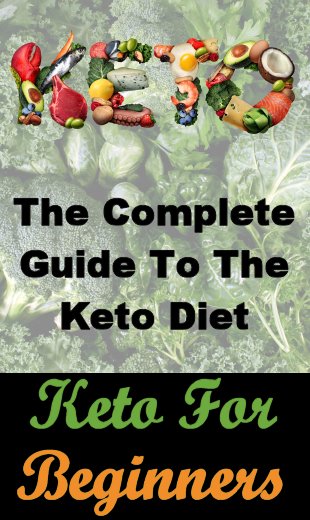4 Methods And 11 Advantages Of Slow Cooking
With so many people rarely having enough time to do anything these days, you might wonder why anybody would choose to use a kitchen appliance that deliberately cooks food slowly – especially when microwave ovens are so common and cheap these days? (Microwaves are also bad for you and your food, but that’s maybe a topic for another day.)
The reason, of course, is that slow cooking, regardless of the method you use, offers various benefits that are well worth considering.
This article looks at the most popular options for cooking food slowly, and the benefits they offer (as well as any disadvantages).
Types Of Slow Cooking
There are four main methods / devices that allow you to cook food more slowly than normal:
- Slow cooker (or crockpot).
- Instant Pot.
- Dutch oven (or casserole).
- Sous-vide.
I’ll look at each of these in more detail below, starting with the slow cooker.
Slow Cooker
This device became popular in the 1970s, although what we now know as a slow cooker began life as a gadget for steeping dry beans.
It consists of three main components:
- An outer casing.
- An inner compartment.
- A lid.
The outer casing is often metal, while the inner compartment is typically a ceramic material, with the lid usually being glass or some other modern transparent material.
Between these two are low-wattage heating devices, which reach temperatures of 180 – 300 degrees Fahrenheit (82 to 149 degrees Celsius).
That heat is transferred through the walls of the ceramic inner container so it can cook your food.
Most slow cookers have two heat settings – low and high – and a timer. Others have more advanced features (e.g. the ability to program them)
The advantages of most slow cookers are that they are simple to use, there is little to go wrong with them, and they are easy to clean (even if the inner crockpot cannot be removed, which is the case with many models).
These are generally regarded as being safe to leave on while you go out for the day (e.g. to work), which is one reason why many people buy them.
And, even though they are on for several hours, because of the low heat they use, they are economical.
Instant Pot
This is a specific brand of cooking device that has become very popular (one model has received over 36,000 reviews on Amazon!), largely because it is what’s known as a multi-cooker, i.e. it allows you to cook food in more than one way.
For example, while it has a slow cooker mode, it can also be used as a pressure cooker.
Of course, with more functions, there is more to go wrong. There was also a mass recall of over 1,000 units back in 2015 because of a danger of receiving electric shocks.
Dutch Oven
Known as a casserole dish in many non-US countries, this is a cooking pot, usually made from cast iron, cast aluminium, or ceramic, that has thick walls and a tight-fitting lid.
They are usually seasoned, although some metal ones may be enamelled instead.
Used for hundreds of years, they provide a method of long, slow cooking, especially for casseroles, roasts, and stews, in a regular oven.
Unless you drop them, there is almost nothing to go wrong with these cooking devices, but they are also often very heavy. For example, a 5.5 quart cast iron Dutch oven from Le Creuset (one of the most well-known brands) weighs over 11 pounds – before you put your food in it.
While you can theoretically leave your oven on while you’re out, it is not always something people feel comfortable doing.
The downside, if you want to call it that, is that the oven in your stove will be on for quite a long time, albeit at a lower temperature than usual.
Sous-Vide
“Sous-vide” is French for “under vacuum”, and it is very different to the methods mentioned above.
Traditionally used by professional chefs, this cooking method is now becoming more popular in everyday homes.
The food you wish to cook is placed inside a plastic pouch, or sometimes in a glass jar, and then it is cooked in a water bath for anywhere from one to 48 hours at a much lower (and carefully regulated) temperature than usual – typically 131 – 140 degrees Fahrenheit (55 – 60 Celsius).
The benefits of this method are that the food is cooked evenly throughout, which results in it retaining its moisture without being overdone or burned on the outside.
As with the slow cooker, these are economical to use, even for all those hours, because of the low temperatures involved.
And they too can be left unattended if you need to go out.
Non-Health Benefits Of Slow Cooking
Whichever of the above methods or devices you choose to use, there are additional benefits in cooking your food slowly:
- Better distribution of flavours. Because your food is cooking for several hours, it gives all of the different flavours more time to distribute evenly throughout your dish, and to be absorbed into the meat or vegetables.
- Great for summer use. On a scorching summer’s day, the last thing you need is your oven heating up the entire kitchen even more. This is not a problem with a slow cooker – not only do they operate at lower temperatures, but their design means most of the heat is directed inwards, not outwards.
- Less clean-up. One of the most popular uses of a slow cooker is to make a one-pot meal, which means you only have the one dish to clean afterwards.
- Less costly. I’ve already mentioned that slow cookers are economical in terms of their cost to run, but the fact that the cooking time is much longer allows you to use cheaper cuts of meat (which can be just as tasty, if not more so) because they will tenderize perfectly over the course of many hours.
- Less effort. While some slow cooker recipes do call for some prep work, in many of them, you can almost literally throw the ingredients in the slow cooker, turn it on, and leave it unattended for hours until your food is ready.
- No scorching. The lower temperatures mean that food typically won’t burn or stick to the bottom of the pot.
- Portability. These are easy to carry around (e.g. in your car), and all you need is an electricity supply to plug it into.
- Versatility. Although often used for stews and other one-pot meals, they can actually be used for a wide variety of food types (e.g. apple sauce or butter, baked potatoes, bread, brownies, cake, cheesecake, glühwein, lasagna, mac n’ cheese, mashed potatoes) and even making candles or soap.
Of course, some of these benefits apply only to crockpots and not to the other type of slow cooking methods.
Health Benefits Of Slow Cooking
Even better than all of the above benefits is the fact that slow cooking is healthier:
- Less oil. Slow cooking tends to use less oil than other methods, which can be healthier (depending on what type of oil you use, of course).
- Nutrient content. The fact that the lid is tight-fitting means all of the nutrients in your food do not escape in steam or through evaporation.
- Safer meat. While many meat-eaters love the taste and flavour of grilled steaks, for example, whether that’s using the stove or a BBQ / grill outdoors, there is a cost to it.
Studies have shown the cooking meat quickly and at high temperatures (e.g. to sear it) can create harmful compounds such as polycyclic aromatic hydrocarbons, heterocyclic amines, and AGEs – advanced glycation end products, also known as glycotoxins.
These compounds have been linked to various chronic health problems (e.g. cardiovascular disease, diabetes, inflammation, oxidative stress) and some are known to be mutagenic (i.e. they can change your DNA) and carcinogenic.
Slow cooking, through its use of lower temperatures, avoids this risk.
Additional Tips
There are a few more things you should know about slow cooking:
- Because these devices rely on cooking at low temperatures for long periods of time, you need to be careful about removing the lid to see how things are going, or to stir the food, because that can let some of the built-up heat and condensation escape.
- If you want to make slow cooker clean-up super-easy, you can use liners, this means the food you are cooking does not dirty the inner container at all. Just make sure they are made from an approved material that is BPA-free.
Conclusion
I’ve been using slow cookers for decades now, and while it’s not something I use every day, it’s a great option to have on hand.
And as you can see, they can be very economical to run, they are easy to use, and they offer health benefits too.
If you haven’t tried one of these yet, then I recommend you check the various types out to see which one might be best for you.
Finally, why not check out the recipes I’ve found that demonstrate just how versatile a slow cooker can be?
Additional Resources
These are suggestions for those who wish to delve deeper into any of the above:
- Dutch Ovens
- Instant Pot
- Slow Cooker Liners (these are the ones I use)
- Slow Cookers / Crockpots
- Sous-Vide







